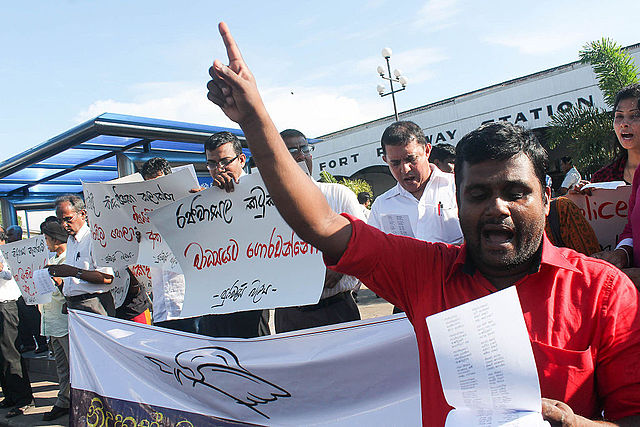By Namita Barthwal

Since the 1960s, China and Pakistan have maintained a robust strategic partnership, underpinned by their geographic proximity and shared geopolitical objectives. The formal military cooperation between the two began in 1963 with the Sino-Pak Border Agreement, where Pakistan strategically transferred the Shaksgam Valley to China. During the 1965 Indo-Pak War, China decisively shifted from neutrality, explicitly supporting Pakistan’s territorial claims in Jammu and Kashmir.
The relationship deepened in the 1970s as China became a critical ally in Pakistan’s nuclear and missile program development, viewing the partnership as a strategic counterweight to India’s regional influence. By the 1980s, China had emerged as Pakistan’s primary arms supplier, facilitating extensive defence collaborations and technological exchanges. Even amid challenges presented by Pakistan-based militant groups in the 1990s, their alliance remained resilient, sustained by mutual strategic interests and a shared perspective on regional dynamics.
This enduring partnership has been characterized by mutual strategic calculations, diplomatic support, and a consistent alignment against commonly perceived rivals, particularly India, demonstrating a pragmatic and long-standing geopolitical relationship.
In the aftermath of the 9/11 attacks, China and Pakistan deepened their collaboration through Defense and Security talks and joint military exercises, effectively countering the growing U.S. influence in the region. China’s consistent support, coupled with its strategic investments in Pakistan, highlighted the resilience of this alliance amidst shifting global dynamics.
“CPEC, launched in 2013, has added an economic dimension to their alliance, intertwining it with military cooperation..”
As the partnership matured in the 21st century, military cooperation between China and Pakistan expanded significantly. Joint military exercises such as Shaheen (Air), Warrior (Army), and Sea Guardian (Navy) have enhanced interoperability between their armed forces, focusing on counter-terrorism, joint operations, and safeguarding the China-Pakistan Economic Corridor (CPEC). Strategic military exercises like Shaheen (Air Force), Warrior (Army), and Sea Guardian (Navy) were designed to improve operational coordination, with a primary focus on combating terrorism, conducting integrated military operations, and protecting the strategic China-Pakistan Economic Corridor (CPEC). The 2005 Treaty of Friendship, Cooperation, and Good Neighborly Relations formalized their mutual security commitments, laying the groundwork for a long-term strategic partnership.
CPEC, launched in 2013, has added an economic dimension to their alliance, intertwining it with military cooperation. Joint defence production projects such as the JF-17 fighter jet, Al Khalid tanks, and naval frigates underscore the depth of their collaboration. Beyond conventional military capabilities, China has significantly enhanced Pakistan’s infrastructure along the Line of Control (LoC), supplying UAVs, surface-to-air missiles, and advanced communication systems. Additionally, Pakistan’s integration into China’s BeiDou Satellite Navigation System has bolstered its intelligence and reconnaissance capabilities, providing strategic advantages in regional security.
“..partnership serves as a counterbalance to India’s regional power and strategic ambitions”
The China-Pakistan alliance is also characterized by its geostrategic and geoeconomic dimensions. Pakistan’s location at the crossroads of South, Central, and West Asia offers China critical access to the Arabian Sea and influence in the Indian Ocean Region. This partnership serves as a counterbalance to India’s regional power and strategic ambitions. Gwadar Port, a centrepiece of CPEC, exemplifies the alliance’s dual focus on economic and military objectives. Strategically positioned near the Strait of Hormuz, Gwadar raises concerns about China’s potential military ambitions in the region, challenging India’s maritime dominance and increasing regional tensions.
While the future of the China-Pakistan military partnership appears promising, it is not without challenges. Enhanced interoperability through joint military exercises and collaborative space initiatives strengthens Pakistan’s strategic capabilities, with the integration of China’s BeiDou system playing a key role. Persistent security threats to CPEC projects may prompt a greater presence of Chinese private security firms in Pakistan, further embedding China’s influence in the region. However, economic disparities between the two nations remain a significant hurdle. Pakistan’s economic instability and dependency on Chinese investments could strain the relationship, particularly if financial support diminishes or shifts to other strategic partners like Iran.
Additionally, anti-China terrorism in Pakistan poses a direct threat to the partnership. Rising attacks on Chinese personnel and infrastructure, driven by jihadist groups, risk undermining mutual trust and slowing down high-profile collaborations. Pakistan’s balancing act between maintaining ties with Western allies and its deepening partnership with China further complicates the alliance. The growing influence of Chinese investments in Pakistan’s strategic decisions may also reduce Islamabad’s flexibility in pursuing its foreign policy goals, particularly with regard to normalizing relations with India.
“India must adopt a multifaceted strategy. Military modernization is imperative to prepare for a potential two-front conflict.”
The implications of the China-Pakistan alliance extend beyond bilateral relations, significantly impacting South Asia’s security dynamics. For India, the partnership strengthens Pakistan’s defence capabilities, creating the potential for a two-front threat involving coordinated military operations by China and Pakistan. Joint infrastructure developments along contentious borders, such as the LoC and Karakoram Pass, exacerbate these concerns. The partnership also intensifies regional rivalries, particularly as CPEC alters trade and security dynamics across the region.
To address these challenges, India must adopt a multifaceted strategy. Military modernization is imperative to prepare for a potential two-front conflict. This includes increasing defence readiness, stockpiling resources, and addressing vulnerabilities such as insufficient ammunition and outdated equipment. Strengthening internal security measures and counter-terrorism capabilities is equally critical to mitigating threats posed by the China-Pakistan nexus.
Diplomatic engagement remains a vital component of India’s response. Building alliances with countries concerned about China’s growing influence in the region, particularly in the Indian Ocean and South Asia, will help counterbalance the China-Pakistan partnership. India should also establish a dedicated research team to monitor developments in China-Pakistan military cooperation, particularly under the guise of CPEC. Understanding the nature and extent of this collaboration will enable India to craft informed and effective counterstrategies.
“The China-Pakistan military partnership presents a formidable challenge to India and South Asia’s regional stability.”
Economic resilience, especially in border regions, is another crucial aspect of India’s approach. Infrastructure development in these areas not only strengthens national security but also boosts local economies, reducing vulnerabilities to external influences. Additionally, clear communication of national security policies and public awareness campaigns are necessary to garner support for government initiatives aimed at countering the strategic challenges posed by the China-Pakistan alliance.
The China-Pakistan military partnership presents a formidable challenge to India and South Asia’s regional stability. Driven by shared strategic interests, economic cooperation under CPEC, and advanced technology sharing, this alliance significantly alters the regional balance of power. India must adopt a comprehensive approach that combines military preparedness, diplomatic outreach, and economic development to navigate these challenges effectively. A nuanced understanding of the evolving dynamics of this partnership will be critical for India to safeguard its strategic interests and maintain regional stability.
This article is an abridged version of the Manekshaw Paper titled “China-Pakistan Military Cooperation: Analysis of the Alliance and Its Implications on South Asia”, written by Namita Barthwal. Please refer to the original publication to explore the full, detailed analysis.
Namita Barthwal is a Research Assistant at Centre for Land Warfare Studies(CLAWS) New Delhi, India. This article is published as an SAFN Guest Essay and gives the views of the author, not the position of the SAFN.


